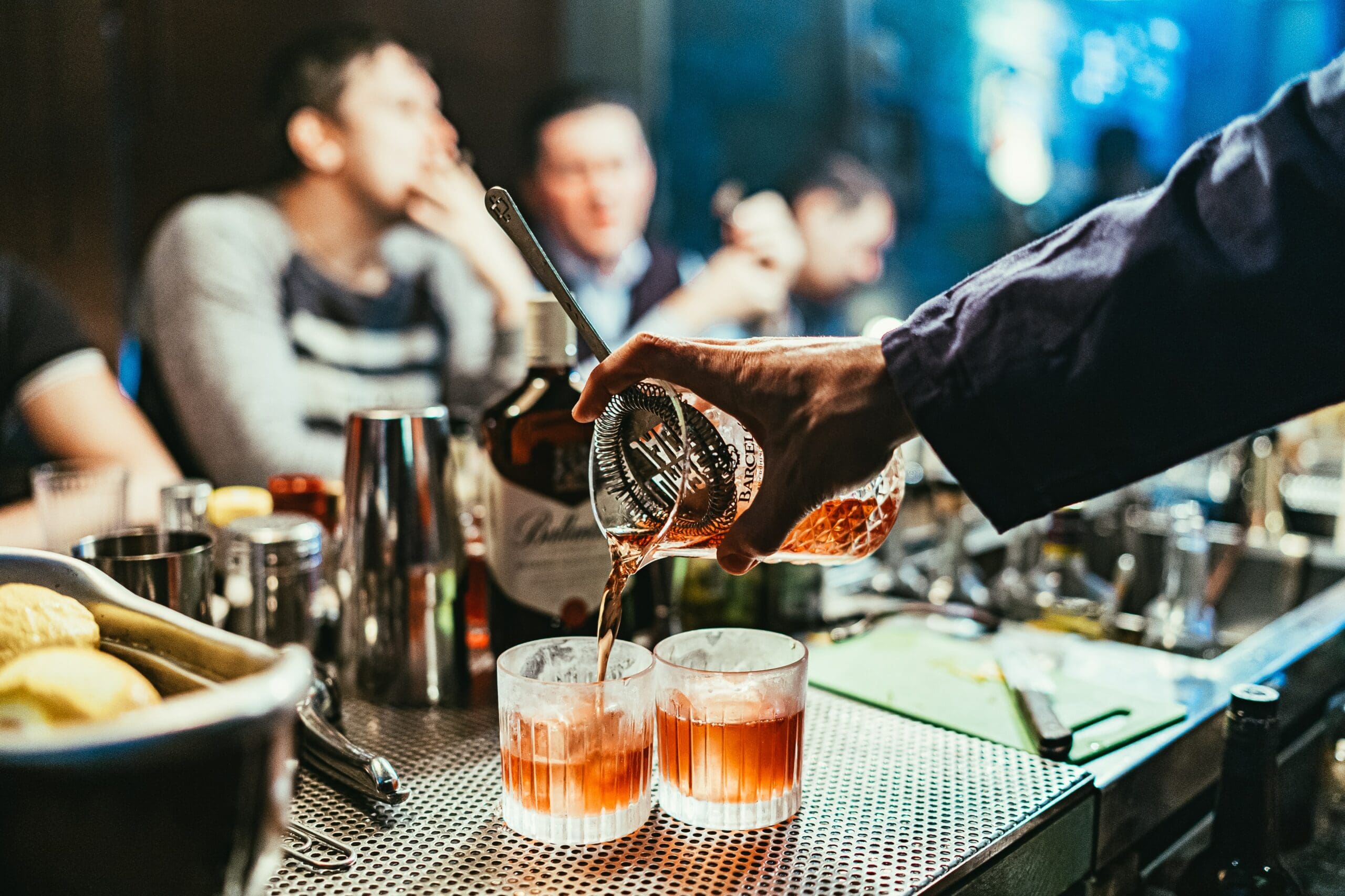Back in 2020, we did quite a bit of research into how alcohol brands were coping with the pandemic (see our guide ‘Managing a global crisis for alcohol brands’) and in our 2021 post, we looked at how alcohol brands were adapting post-lockdown.
Over the last few years, many of us have become more mindful of our relationship with alcohol, and according to the IWSR’s latest Drinks Market Analysis report, which surveyed consumers in 17 countries in February 2023, spending on alcohol is falling in many global markets:
- Consumers are being more selective about how and when they spend money on alcohol due to the cost-of-living crisis.
- Drinking at home is still preferred to drinking in bars, pubs etc., as it’s cheaper to buy alcohol for home – and the money saved is put towards the household food budget.
- Some consumers choose to buy luxury alcohol brands and drink in moderation, while others look for the best deals they can find in the supermarket.
The UK government has introduced a new way of taxing alcoholic drinks – by introducing lower taxes on drinks with reduced alcohol content (below 3.5% ABV) and keeping higher taxes on those with a higher percentage of alcohol (more than 8.5% ABV). It means that spirits and some wines will cost more. These changes were designed to decrease the number of units people drink per week.
Alcohol brands have to tread a fine line
Alcohol brands understand that wellness trends around alcohol consumption will likely grow as consumers look for ways to make healthier choices (and save money). The global low/no-alcohol sector grew by 7% in 2022 and is now worth $11bn – and is expected to see even higher levels of growth by 2026.
They also know that some people will always find unhealthy ways to use alcohol and that they must do what they can to discourage this.
Drinks manufacturers that want their alcohol brands to stand out in a market where consumers are worried about cost, wellbeing and image, realise they need to invest in social content beyond simply showcasing their drinks.
How can they do this?
- By focusing on storytelling to entertain and inspire
Alcohol brands are already great at using storytelling in their ads and social content, and we’re starting to see some brands branch out into quirkier and less direct forms of storytelling.
Craft Ale brand Beavertown produced a short film last Halloween called Rime of the Ancient Mariner. Instead of focusing on the product, the brand produced a film designed to entertain people and get them talking.
https://www.youtube.com/watch?v=_rkLv9yCJVo
It’s a clever way to give people something of value without trying to sell a product. Instead, it gets the brand’s name out there and shines a spotlight on its personality and tone of voice. It makes people want to find out more.
- By making responsible drinking the focus of the content
Alcohol brands have had to include a message about drinking responsibly for years now, but it’s often not the point of the ad. However, with the rising trend of people drinking in moderation or not at all (or taking part in events like Dry January), brands are starting to make responsible drinking the entire focus of their campaigns and social content.
One example of this is Smifnoff’s ‘drops of advice’ YouTube series.
https://www.youtube.com/watch?v=voyZ7Qg_t6Q
These videos are short and engaging enough to keep people’s attention as they scroll, and they give younger consumers advice on responsible drinking.
Again, it’s not about selling a product here but creating content that’s useful for the consumer.
- By finding and focusing on your aesthetic
Brands that use visual social apps, like Instagram, do really well by focusing on creating an aesthetic unique to their brand (much like developing a specific tone of voice).
Alcohol brands like BACARDI are using Instagram to share cocktail recipes, but they’re sharing them in a way that helps people associate the brand with certain activities or visuals.
https://www.instagram.com/bacardi/
By having an aesthetic that people can associate with products, brands can create social content that’s more memorable and inspiring.
- By showing how you’re stepping up on important issues
Brands like Renais Gin (founded by actor, Emma Watson and her brother) are using social media to show people what the brand is doing to help the environment. Renais, for example, is carbon-neutral.
https://www.instagram.com/p/Crkyct1gmDQ/
Sustainability is becoming an increasingly important issue for alcohol brands to focus on as consumers become more aware of what they’re buying and its impact on the planet.
By highlighting important issues and working with a diverse group of influencers, alcohol brands can demonstrate their values in action – this is very appealing to the Gen Z and millennial market and worth exploring.
As consumers, our relationship with alcohol continues to evolve. Social media offers alcohol brands a flexible and creative way to keep pace with these changes and find ways to serve consumers in ways that make them comfortable.





